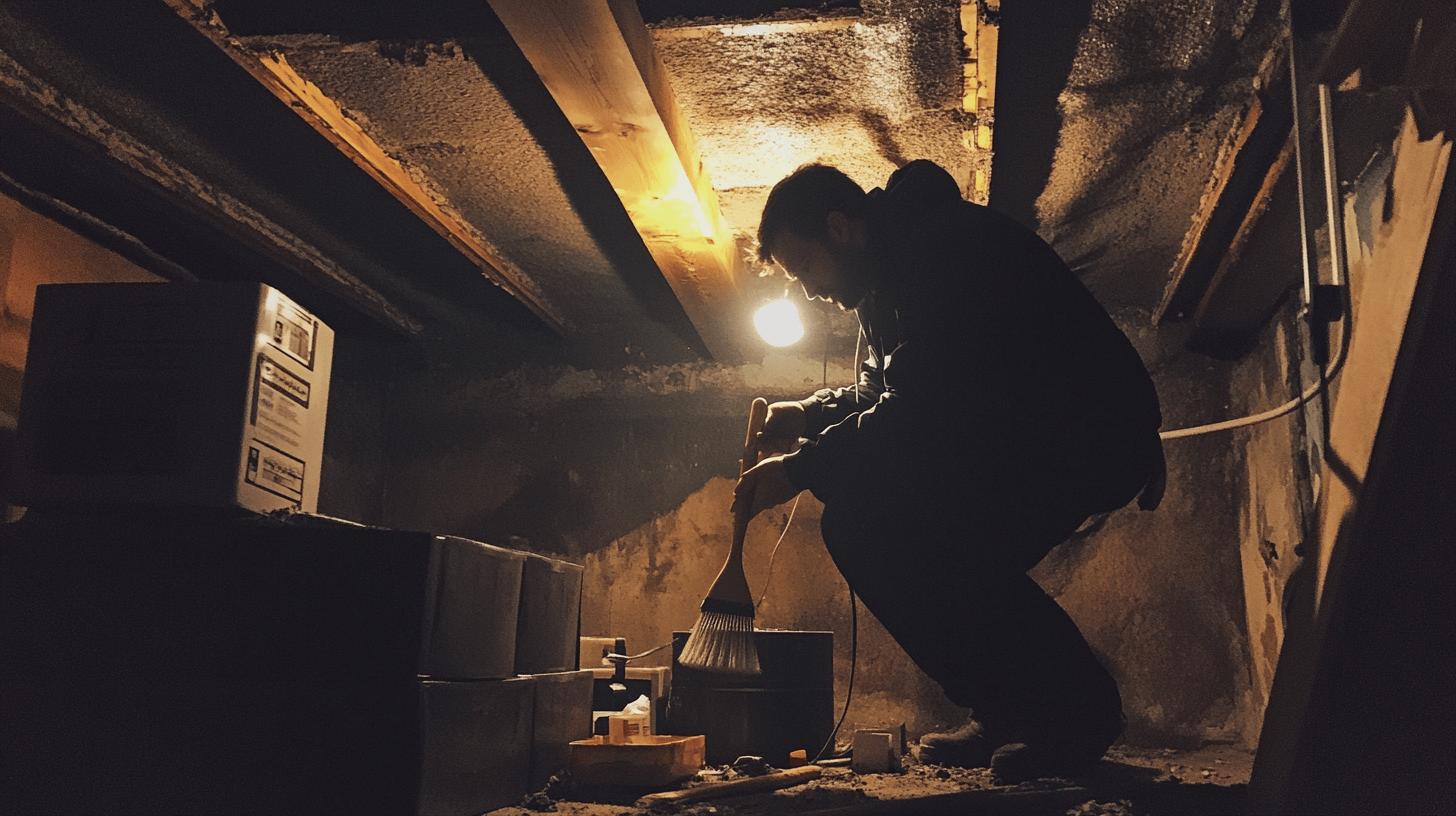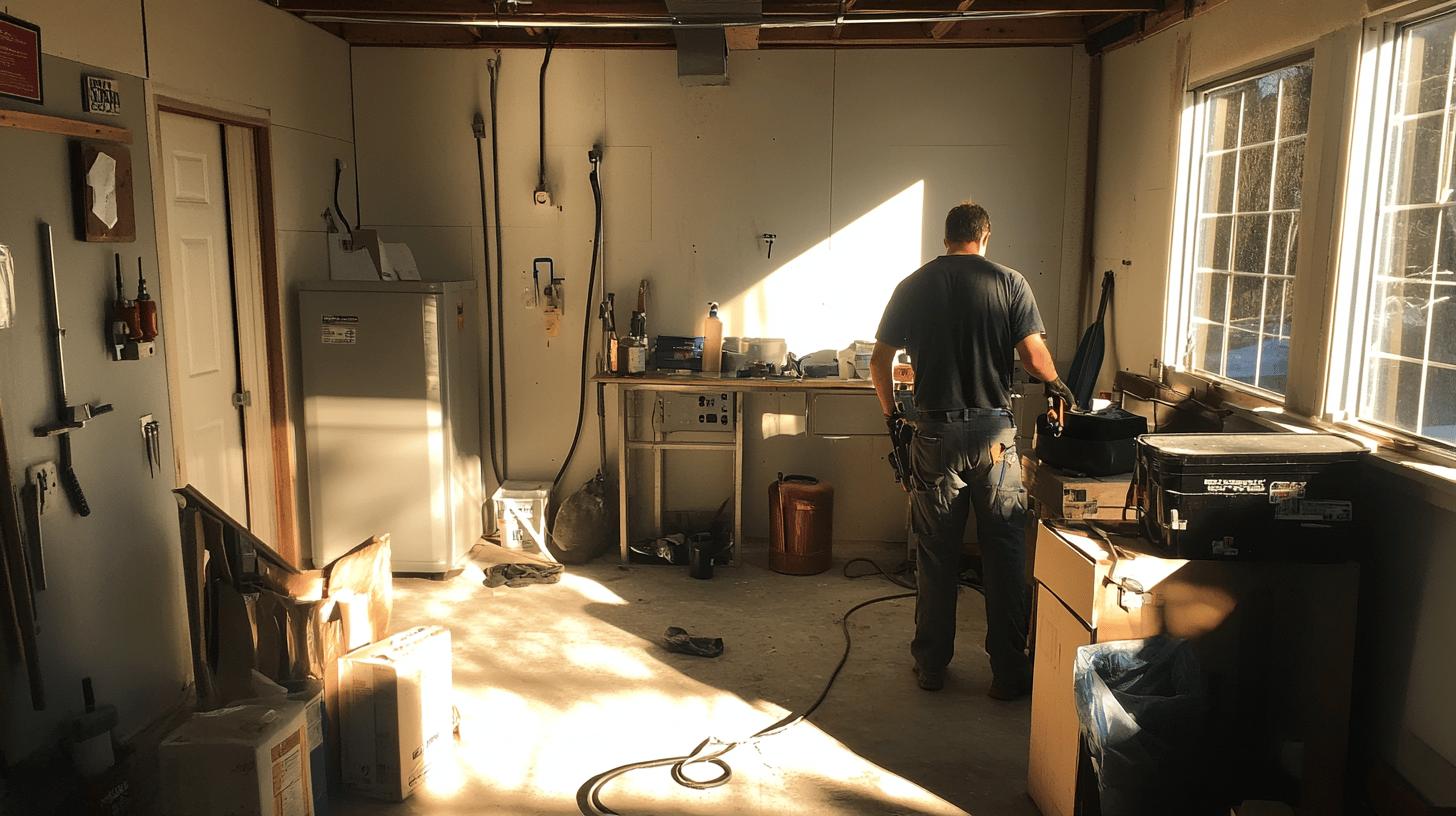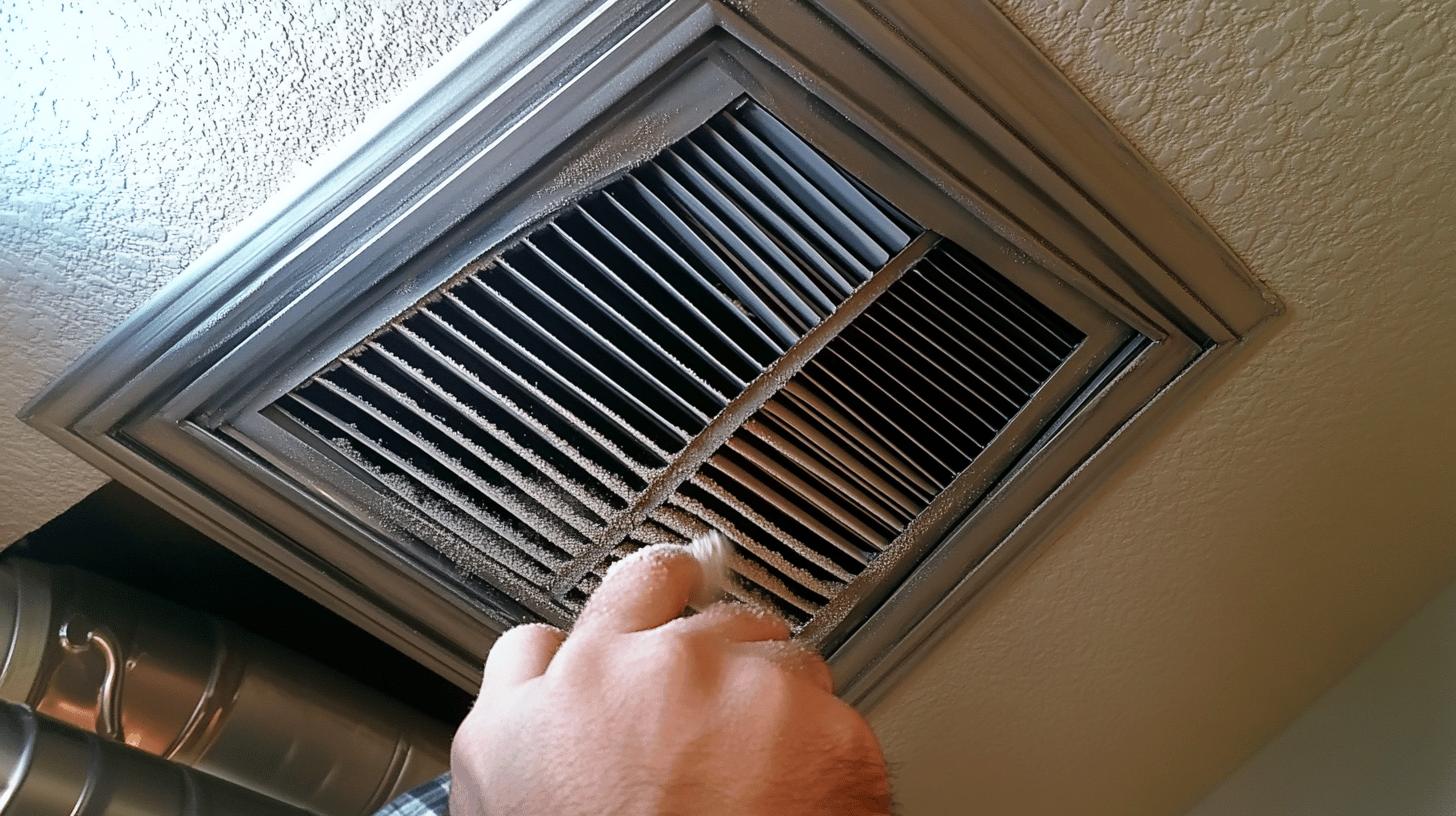TL;DR:
- Regular HVAC cleaning is crucial for air quality and efficiency; clean every 3-5 years (NADCA).
- Benefits: Improved air quality, lower utility costs, extended lifespan, reduced mold risk, reliable performance.
- Cleaning Steps:
- Prepare by turning off power and accessing ducts.
- Use brushes and vacuums to remove contaminants.
- Maintain continuous negative pressure during cleaning.
- Tools Needed: Brushes, compressed air nozzles, high-efficiency vacuums.
- Professional Cleaning Costs: $300-$500; mold remediation costs up to $700.
- Call professionals for persistent issues like reduced airflow.
- Clean systems promote health and lower energy bills.
Did you know the air inside your home could be dirtier than the air outside? Your HVAC system might be spreading dust, allergens, and other pollutants around. Cleaning your HVAC isn’t just about getting rid of dust—it’s about making your home healthier and more efficient. By keeping your system clean, you improve air quality, save on energy, and help your system last longer. Simple steps can make a big difference in your home’s air and your energy bills.
Understanding HVAC System Cleaning
Cleaning your HVAC system regularly is key to keeping the air clean and the system running smoothly. If you don’t clean it, dust, mold, and germs can build up and get circulated through your home, which can lower air quality and even cause health problems for people with allergies or respiratory issues. A clogged system also uses more energy, leading to higher utility bills. Keeping it clean helps with both air quality and energy efficiency.
The National Air Duct Cleaners Association (NADCA) recommends cleaning your air ducts every three to five years to avoid dust buildup, which can damage parts and reduce the system’s lifespan. Professional cleaning makes sure your system runs at its best, saving you money on energy bills and helping your equipment last longer.
Benefits of Regular HVAC System Cleaning:
- Improved Indoor Air Quality by reducing allergens.
- Enhanced Energy Efficiency lowers utility costs.
- Extended Equipment Lifespan from less wear and tear.
- Reduced Mold Growth Risk, protecting health.
- Consistent and Reliable Performance, decreasing breakdowns.
Step-by-Step Guide to Cleaning HVAC Systems

Comprehensive HVAC cleaning is key to keeping your air quality and system performance in check. Professionals use special tools and techniques to clean every part of the system. They use brushes, air whips, and compressed air to dislodge debris, which is then safely removed. By maintaining continuous negative pressure during the process, they prevent pollutants from spreading, ensuring your home stays cleaner.
Preparing the System
Before cleaning, make sure to turn off the HVAC system’s power to ensure safety. The ductwork should be accessed carefully, and sometimes new access points may need to be created. It’s best to have experts handle this to avoid damaging the system. Proper preparation is key for thorough cleaning and reaching all the parts of the system.
Agitation and Removal of Contaminants
Once the system is prepared, the next step is to dislodge and remove dirt and dust using specialized tools like brushes and vacuums. This helps eliminate pollutants, improving both air quality and the overall efficiency of your HVAC system.
Ensuring Negative Pressure
Maintaining continuous negative pressure during cleaning ensures that all contaminants are captured and prevents them from escaping into the home. High-efficiency vacuums are used to guarantee a thorough and effective cleaning process.
Essential Tools Needed for HVAC Cleaning:
- Brushes – to loosen debris.
- Compressed Air Nozzles – to dislodge dirt.
- High-Efficiency Vacuums – to maintain pressure and collect debris.
Following these steps and using the right tools ensures a clean HVAC system, promoting efficiency and a healthier home.
DIY Tips for HVAC System Cleaning
Replacing air filters is an easy DIY task that helps your HVAC system work better. Change filters every 1-3 months to keep airflow strong and prevent dust buildup. Also, check that vents are clear for smooth air circulation.
However, DIY cleaning can have risks. Using the wrong methods can damage your ductwork, and untrained cleaning may miss contaminants, letting them spread around your home. Without the right tools, DIY cleaning often doesn’t match professional results.
If problems like poor airflow or strange noises continue, it’s time to call in a professional. They have the right knowledge and equipment to do a thorough job, improving your system’s efficiency and lifespan.
The Cost and Value of Professional HVAC Cleaning

Professional services range from $300 to $500. Costs depend on system size and contamination level. Large systems or those with mold may need more work, raising costs. Even so, proper cleaning enhances system efficiency.
| Service | Cost Range | Benefits |
|---|---|---|
| Basic Air Duct Cleaning | $300 – $400 | Improves air quality and reduces allergens |
| Comprehensive HVAC System Cleaning | $400 – $500 | Enhances energy efficiency and extends lifespan |
| Mold and Mildew Remediation | $500 – $700 | Eliminates health risks and prevents mold |
When choosing a cleaning service, check for good reviews, experience, and NADCA certification. Certified technicians follow industry standards, reducing risk of system damage and ensuring thorough cleaning.
Health and Efficiency Benefits of Regular HVAC Cleaning
Dirty HVAC systems can be a health hazard. They can spread mold, bacteria, and dust, which can worsen respiratory problems, especially for those with allergies or asthma. Cleaning the system removes harmful particles, improving air quality and overall health.
Cleaning also boosts efficiency. When an HVAC system is dirty, it has to work harder, using more energy. If your energy bills are high, your system might be struggling. Regular cleaning improves airflow, reduces strain, and helps lower energy use and costs.
Users often report better air quality and smoother HVAC performance after cleaning. The system feels fresher, with fewer breakdowns, showing that regular maintenance makes a big difference in keeping your home cost-effective and comfortable.
Final Words
Understanding the importance of HVAC system cleaning shows how it helps improve both air quality and system efficiency. Regular maintenance, whether through professional help or simple DIY steps, can greatly extend the life of your equipment and protect your home from contaminants.
Routine cleaning and professional care make sure your home stays cleaner and healthier. These practices also lead to energy savings and better system performance.
By prioritizing HVAC cleaning, you’re investing in a more comfortable, efficient living space that enhances your overall quality of life.
FAQ
Q: How much does cleaning an HVAC system cost?
Professional HVAC cleaning services typically cost between $300 and $500. Factors such as system complexity and service provider experience can influence the final price.
Q: Is duct cleaning worth the investment, or is it a waste of money?
Cleaning air ducts can improve air quality and system efficiency. It is not a waste if done by qualified professionals who ensure proper cleaning techniques are used.
Q: How often should HVAC systems be cleaned?
The National Air Duct Cleaners Association (NADCA) recommends cleaning HVAC systems every three to five years to maintain air quality and system efficiency.
Q: What’s the difference between HVAC cleaning and air duct cleaning?
HVAC cleaning encompasses the entire system including the heating and cooling units, while air duct cleaning focuses solely on the ductwork within the system.
Q: Does cleaning air ducts really make a difference?
Cleaning air ducts can improve indoor air quality, enhance energy efficiency, and extend the lifespan of HVAC equipment by removing dust and allergens.
Q: How do I clean my HVAC system by myself?
For DIY cleaning, change air filters every 1-3 months and ensure vents are clear. Be cautious, as improper techniques can damage ducts.
Q: What are the drawbacks of duct cleaning?
Potential drawbacks include inadequate cleaning by untrained individuals, which may damage the ductwork, and unnecessary cleaning if no significant buildup exists.
Q: How do I find air duct cleaning services near me?
Search online reviews and compare local service providers like Stanley Steemer, Servpro, or Ductz. Consider customer feedback and certifications for quality assurance.

